smacdonald
Well-Known Member
Hi All,
This is part two of my Western Australia odyssey. Part one is here, and some lead up is on my blog.
Stewart
---
Today we're heading up to Shark Bay, the first stop on our two week adventure. I'm heading out with Dean Bradshaw and Farhan Bokhari. As we left Perth I noticed that the latest in hair fashion has only just arrived in Perth.

The latest in hair fashion has just arrived in Perth
After a very long drive (and some very oily servo food) we arrived late at night in Francois Peron National Park, stopping only to take in a fairly spectacular sunset.
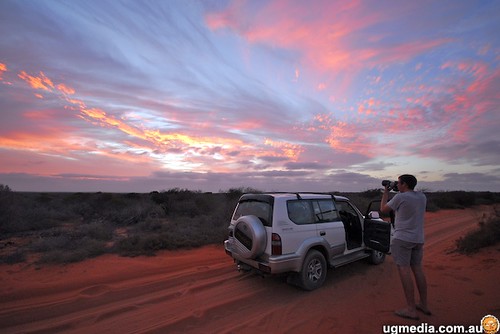
Dean taking a shot of the setting sun
We set up camp and went for a drive. Just 20 metres outside our campsite we saw the first reptile of the trip, a western spiny-tailed gecko (Strophurus strophurus). This species is easily identifiable by the pale bands on its tail.
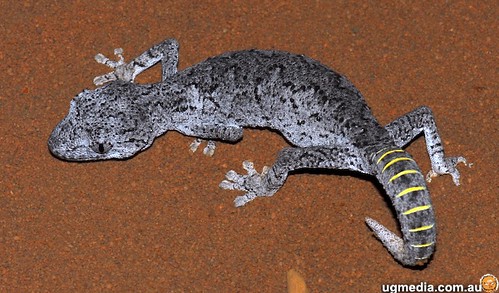
Western spiny-tailed gecko (Strophurus strophurus)
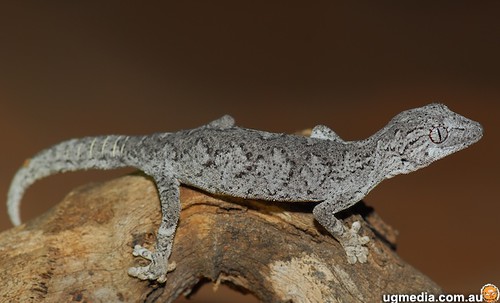
Western spiny-tailed gecko (Strophurus strophurus)
The entire Peron Peninsula is separated from the rest of Australia by a solar-powered electric fence, constructed in 1995 to try to keep out feral animals. There are still plenty of feral cats inside the fence, but a baiting program both inside and outside the fence seems to be keeping the fox numbers down. A number of rare species have been reintroduced onto the Peron Peninsula through the Department of Environment and Conservation's Project Eden. Bilbies, brush-tailed bettongs, malleefowl, rufous and banded hare-wallabies and womas have all been released behind the fence. Sadly the two hare-wallaby species died out, but the other three species are doing well. We were lucky enough to see a bilby (Macrotis lagotis) on our first night in the park. I have to admit that I'm not surprised they've been decimated by introduced predators, as they seem like incredibly stupid animals. The one we saw was bumping into trees and bushes as it was walking around. Of course, it was smart enough to get away from us before we managed to get a picture, so the below picture is of a captive bilby at Barna Mia.
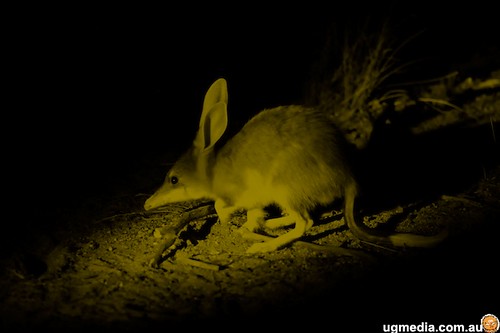
Bilby (Lagotis macrotis)
The interesting thing is that the electric fence was constructed at the narrowest point of the peninsula, which means that the nearby town of Denham is inside the fence. Residents of Denham are able to keep cats and dogs, which seems a bit counter-intuitive when the fence was constructed to keep these ferals out.
We were hoping to see some woma pythons (Aspidites ramsayi) whilst driving around at night, but we unfortunately didn't. Over the next couple of nights we did manage to see a western hooded scaly-foot (Pygopus nigriceps), Bynoe's gecko (Heteronotia binoei), smooth knob-tailed gecko (Nephrurus levis occidentalis), a sleeping western bearded dragon (Pogona minor), an echidna (Tachyglossus aculeatus), a large katydid and lots of scorpions.

Western hooded scaly-foot (Pygopus nigriceps)

Western hooded scaly-foot (Pygopus nigriceps)
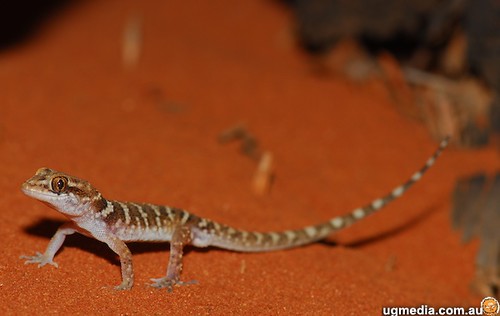
Bynoe's gecko (Heteronotia binoei)
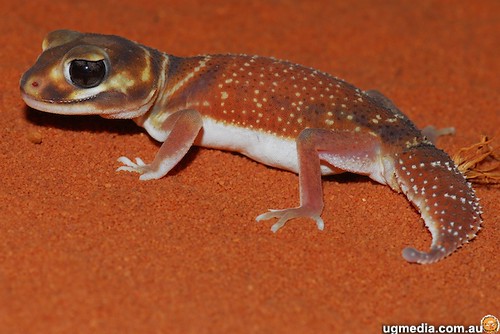
Smooth knob-tailed gecko (Nephrurus levis occidentalis)

Western bearded dragon (Pogona minor)

Echidna (Tachyglossus aculeatus)
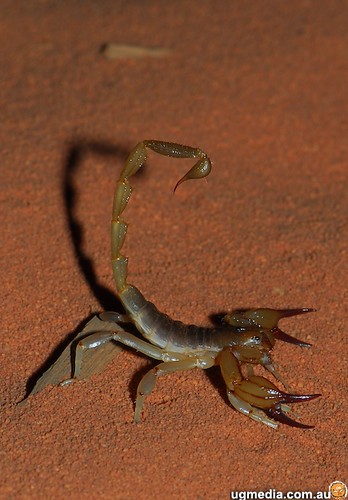
Scorpion
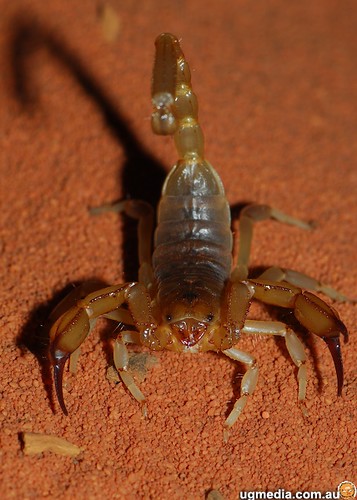
Scorpion

Giant enemy katydid
The landscape on the peninsula is red soil and spinifex as far as the eye can see, with the occasional tree scattered around. It's amazing that this habitat runs right up to the sea. It's so different from the east coast!
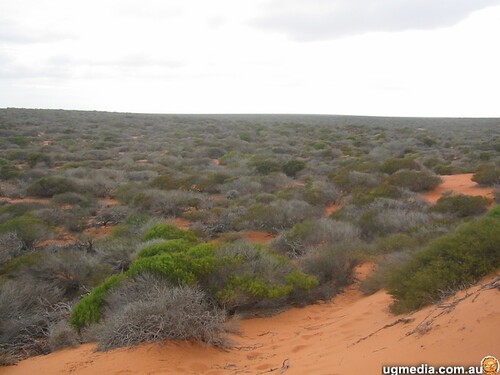
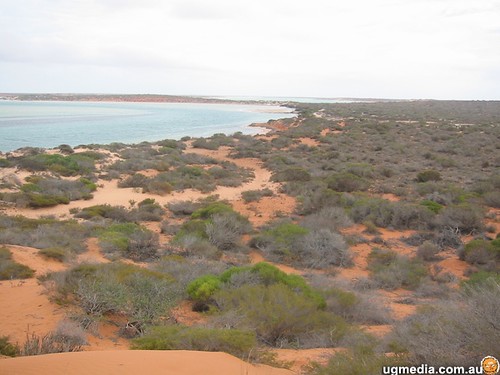
During the day we saw some emus, an emu skull, lots of sand goannas (Varanus gouldii), a dead shingleback (Tiliqua rugosa), and lots of western bearded dragons (Pogona minor).
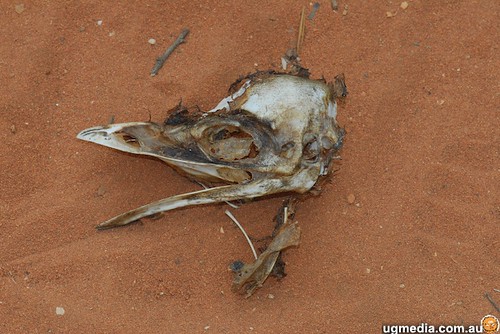
Emu (Dromaius novaehollandiae) skull

Sand goanna (Varanus gouldii)
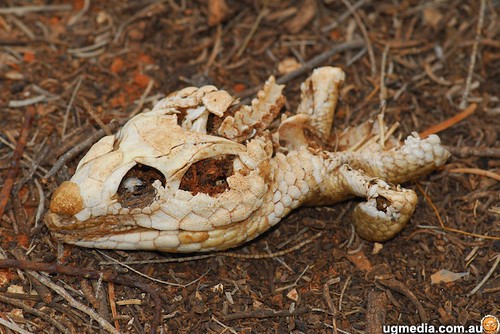
Dead shingleback (Tiliqua rugosa)
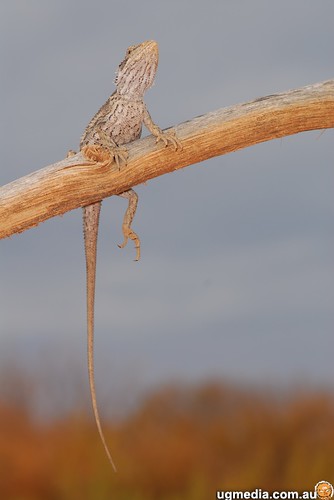
Western bearded dragon (Pogona minor)
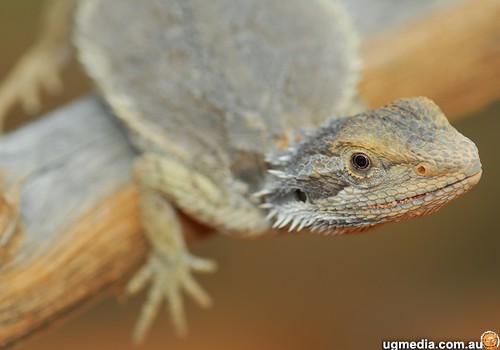
Western bearded dragon (Pogona minor)
We went right up to the tip of Peron Peninsula, where two strong ocean currents converge. We saw a manta ray (Manta birostris) 'hovering' in the shallows and I tried to swim out to it. Unfortunately it was in the convergence zone of the currents and I was in danger of being swept out to see, so I had to give up on my dream of riding atop a gigantic ray. There were several thousand live cormorants on the beach and several dozen carcasses scattered around. We were speculating about their cause of death when a wedge-tailed eagle (Aquila audax) swooped down and nailed one. The whole event happened too fast to get any decent pics. We went back the next afternoon to try to get some pics. We saw the eagle on the ground near the cormorant colony but he took off and didn't come back. We packed up and headed to our next destination.
Things seen but not photographed:
Things not seen and not photographed:
This is part two of my Western Australia odyssey. Part one is here, and some lead up is on my blog.
Stewart
---
Today we're heading up to Shark Bay, the first stop on our two week adventure. I'm heading out with Dean Bradshaw and Farhan Bokhari. As we left Perth I noticed that the latest in hair fashion has only just arrived in Perth.

The latest in hair fashion has just arrived in Perth
After a very long drive (and some very oily servo food) we arrived late at night in Francois Peron National Park, stopping only to take in a fairly spectacular sunset.

Dean taking a shot of the setting sun
We set up camp and went for a drive. Just 20 metres outside our campsite we saw the first reptile of the trip, a western spiny-tailed gecko (Strophurus strophurus). This species is easily identifiable by the pale bands on its tail.

Western spiny-tailed gecko (Strophurus strophurus)

Western spiny-tailed gecko (Strophurus strophurus)
The entire Peron Peninsula is separated from the rest of Australia by a solar-powered electric fence, constructed in 1995 to try to keep out feral animals. There are still plenty of feral cats inside the fence, but a baiting program both inside and outside the fence seems to be keeping the fox numbers down. A number of rare species have been reintroduced onto the Peron Peninsula through the Department of Environment and Conservation's Project Eden. Bilbies, brush-tailed bettongs, malleefowl, rufous and banded hare-wallabies and womas have all been released behind the fence. Sadly the two hare-wallaby species died out, but the other three species are doing well. We were lucky enough to see a bilby (Macrotis lagotis) on our first night in the park. I have to admit that I'm not surprised they've been decimated by introduced predators, as they seem like incredibly stupid animals. The one we saw was bumping into trees and bushes as it was walking around. Of course, it was smart enough to get away from us before we managed to get a picture, so the below picture is of a captive bilby at Barna Mia.

Bilby (Lagotis macrotis)
The interesting thing is that the electric fence was constructed at the narrowest point of the peninsula, which means that the nearby town of Denham is inside the fence. Residents of Denham are able to keep cats and dogs, which seems a bit counter-intuitive when the fence was constructed to keep these ferals out.
We were hoping to see some woma pythons (Aspidites ramsayi) whilst driving around at night, but we unfortunately didn't. Over the next couple of nights we did manage to see a western hooded scaly-foot (Pygopus nigriceps), Bynoe's gecko (Heteronotia binoei), smooth knob-tailed gecko (Nephrurus levis occidentalis), a sleeping western bearded dragon (Pogona minor), an echidna (Tachyglossus aculeatus), a large katydid and lots of scorpions.

Western hooded scaly-foot (Pygopus nigriceps)

Western hooded scaly-foot (Pygopus nigriceps)

Bynoe's gecko (Heteronotia binoei)

Smooth knob-tailed gecko (Nephrurus levis occidentalis)

Western bearded dragon (Pogona minor)

Echidna (Tachyglossus aculeatus)

Scorpion

Scorpion

Giant enemy katydid
The landscape on the peninsula is red soil and spinifex as far as the eye can see, with the occasional tree scattered around. It's amazing that this habitat runs right up to the sea. It's so different from the east coast!


During the day we saw some emus, an emu skull, lots of sand goannas (Varanus gouldii), a dead shingleback (Tiliqua rugosa), and lots of western bearded dragons (Pogona minor).

Emu (Dromaius novaehollandiae) skull

Sand goanna (Varanus gouldii)

Dead shingleback (Tiliqua rugosa)

Western bearded dragon (Pogona minor)

Western bearded dragon (Pogona minor)
We went right up to the tip of Peron Peninsula, where two strong ocean currents converge. We saw a manta ray (Manta birostris) 'hovering' in the shallows and I tried to swim out to it. Unfortunately it was in the convergence zone of the currents and I was in danger of being swept out to see, so I had to give up on my dream of riding atop a gigantic ray. There were several thousand live cormorants on the beach and several dozen carcasses scattered around. We were speculating about their cause of death when a wedge-tailed eagle (Aquila audax) swooped down and nailed one. The whole event happened too fast to get any decent pics. We went back the next afternoon to try to get some pics. We saw the eagle on the ground near the cormorant colony but he took off and didn't come back. We packed up and headed to our next destination.
Things seen but not photographed:
- Ctenophorus scutellatus
- Ctenophorus maculatus
- Bilby (Macrotis lagotis)
Things not seen and not photographed:
- Woma (Aspidites ramsayi)



